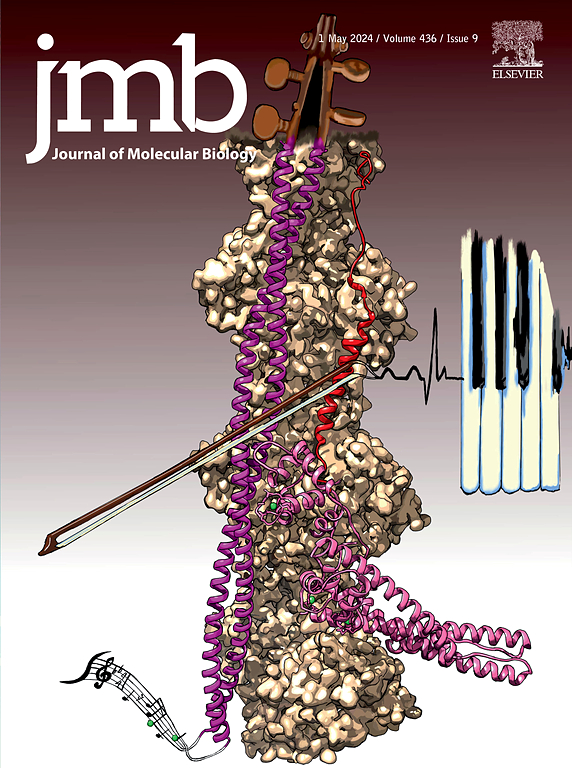Insights into Noncanonical and Diversified Functions of ABCF1: From Health to Disease
IF 4.5
2区 生物学
Q1 BIOCHEMISTRY & MOLECULAR BIOLOGY
引用次数: 0
Abstract
The ATP-binding cassette (ABC) family is one of the largest and most ancient classes of transporters found in nearly all living organisms. However, ABCF1 lacks a transmembrane domain and therefore does not function as a transporter. Recent studies point to an unexpectedly diverse role of ABCF1 in regulating cell-essential processes from mRNA translation, innate immune response, and phagocytosis in somatic cells, to transcriptional regulation in embryonic stem cells. ABCF1’s functional plasticity is in part mediated by its disordered low-complexity domain (LCD) to enable dynamic biomolecular interactions. In this review, we discuss how ABCF1 takes advantage of the LCD to expand its functional repertoire and highlight fundamental principles of biomolecular assembly driving biological reactions. We also discuss the functions and mechanisms of ABCF1 in development and tissue homeostasis, and how dysregulation of ABCF1 contributes to diseases such as inflammatory disease and cancer.

ABCF1非规范和多样化功能的认识:从健康到疾病。
atp结合盒(ABC)家族是几乎在所有生物体中发现的最大和最古老的转运体之一。然而,ABCF1缺乏跨膜结构域,因此不具有转运蛋白的功能。最近的研究指出,ABCF1在调节细胞基本过程中的作用出乎意料地多样化,从体细胞的mRNA翻译、先天免疫反应和吞噬,到胚胎干细胞的转录调节。ABCF1的功能可塑性部分是由其无序低复杂性结构域(LCD)介导的,从而实现动态的生物分子相互作用。在这篇综述中,我们讨论了ABCF1如何利用LCD扩展其功能库,并强调了生物分子组装驱动生物反应的基本原理。我们还讨论了ABCF1在发育和组织稳态中的功能和机制,以及ABCF1的失调如何导致炎症性疾病和癌症等疾病。
本文章由计算机程序翻译,如有差异,请以英文原文为准。
求助全文
约1分钟内获得全文
求助全文
来源期刊

Journal of Molecular Biology
生物-生化与分子生物学
CiteScore
11.30
自引率
1.80%
发文量
412
审稿时长
28 days
期刊介绍:
Journal of Molecular Biology (JMB) provides high quality, comprehensive and broad coverage in all areas of molecular biology. The journal publishes original scientific research papers that provide mechanistic and functional insights and report a significant advance to the field. The journal encourages the submission of multidisciplinary studies that use complementary experimental and computational approaches to address challenging biological questions.
Research areas include but are not limited to: Biomolecular interactions, signaling networks, systems biology; Cell cycle, cell growth, cell differentiation; Cell death, autophagy; Cell signaling and regulation; Chemical biology; Computational biology, in combination with experimental studies; DNA replication, repair, and recombination; Development, regenerative biology, mechanistic and functional studies of stem cells; Epigenetics, chromatin structure and function; Gene expression; Membrane processes, cell surface proteins and cell-cell interactions; Methodological advances, both experimental and theoretical, including databases; Microbiology, virology, and interactions with the host or environment; Microbiota mechanistic and functional studies; Nuclear organization; Post-translational modifications, proteomics; Processing and function of biologically important macromolecules and complexes; Molecular basis of disease; RNA processing, structure and functions of non-coding RNAs, transcription; Sorting, spatiotemporal organization, trafficking; Structural biology; Synthetic biology; Translation, protein folding, chaperones, protein degradation and quality control.
 求助内容:
求助内容: 应助结果提醒方式:
应助结果提醒方式:


